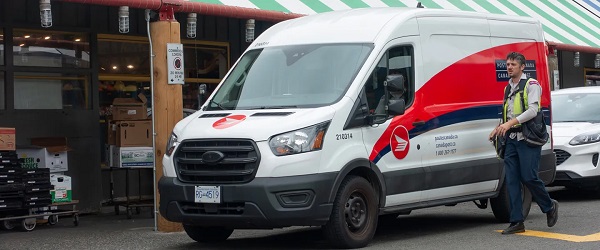Alberta
Watch: Provincial Review Panel tees off on Supervised Consumption Sites

From The Province of Alberta
Impact of supervised consumption sites report released
The final report of the expert-led Supervised Consumption Services Review Committee is now available online.
The Supervised Consumption Services Review Committee listened to more than 19,000 Albertans’ concerns about the impacts supervised consumption services (SCS) sites are having on their homes, businesses and neighbourhoods.
The final report contains the committee’s findings regarding needle debris, social disorder, public safety and other concerns. The committee found serious problems with supervised consumption services as they are currently being operated, and provided thoughtful considerations for improving services and community safety, while building a comprehensive recovery-oriented system of care that offers the greatest chance to lift vulnerable Albertans with addiction out of their current plight.
“This report is a wake-up call for Alberta. Every one of us deserves to feel safe in our communities, and every Albertan struggling with addiction should be able to access the supports they need. We will consider this report, and all other relevant evidence, as we develop a comprehensive, long-term approach that works. That means improving addiction treatment services and supports to create a full continuum of care across the province.”
“Crime grows in areas where illegal drug use is on the rise. Our government supports a firm justice system that includes investigating, disrupting and dismantling the organized crime groups that supply and sell illegal drugs that fuel addiction, ruin people’s lives and take a terrible toll on our communities. We’ll continue to ensure law enforcement and the justice system have the tools and resources to protect community safety.
“Thank you to all Albertans who participated in this process. Our committee was given a mandate to hear from people across the province on all sides of this important issue. The findings in this report demonstrate the compassion many Albertans feel for their neighbours and their commitment to creating safe, welcoming communities for everyone.”
“Our committee heard from thousands of passionate Albertans, and reviewed a wide range of data and evidence sources to examine what impact these services are having on the communities around them. The findings may be difficult for some to hear, but are vital to improving the health and well-being of those who use the sites and those who live in surrounding neighbourhoods.”
Key findings from the report include:
- Increased needle debris and deteriorating public safety around the sites were significant concerns raised during the town halls, through the surveys and in stakeholder meetings.
- While there were no deaths recorded among people at the SCS sites, death rates in the immediate vicinity of the sites after the sites opened continued to increase along with province-wide rates of opioid deaths.
- Opioid-related calls for emergency medical services also increased in the immediate vicinity following the opening of the sites.
- Many people indicated they felt less safe in the areas surrounding the SCS sites after they opened.
- Lack of focus on referrals to detoxification and treatment resources.
- Inconsistent and often inaccurate classification of “overdose reversals.”
- Substantial increases in the use of non-opioid substance use, specifically methamphetamines, leading to aggressive behaviour endangering public safety.
Over the coming months, the government will consider changes to supervised consumption services and other addiction treatment and recovery resources, on a city-by-city basis.
Quick facts
- The eight-member committee included First Nations people, experts in addiction and recovery, harm reduction, mental health, trauma, pain management, law enforcement, crime reduction and justice, as well as people with lived experience.
- 16,831 individuals and 440 businesses submitted feedback to the committee through an online survey.
- About 1,800 people attended the town halls in Edmonton, Red Deer, Calgary, Lethbridge, Medicine Hat and Grande Prairie.
- More than 500 first responders and more than 50 stakeholder groups provided evidence and shared concerns with the committee.
Alberta
Alberta government records $8.3 billion surplus—but the good times may soon end

From the Fraser Institute
By Tegan Hill
According to last week’s fiscal update, the Smith government recorded a $8.3 billion surplus in 2024/25—$8 billion more than what the government projected in its original 2024 budget. But the good times won’t last forever.
Due largely to population growth, personal income tax revenue exceeded budget projections by $500 million. Business tax revenue exceeded budget expectations by $1.1 billion. And critically, thanks to relatively strong oil prices, resource revenue (e.g. oil and gas royalties) saw a $4.7 billion jump.
The large budget surplus is good news, particularly as it will be used to pay down government debt (which taxpayers must ultimately finance) and to invest for the future. But again, the good times could soon be over.
Recall, the Alberta government incurred a $17.0 billion budget deficit just a few years ago in 2020/21. And it wasn’t only due to COVID—until the recent string of surpluses, the government ran deficits almost every year since 2008/09, racking up significant amounts of debt, which still largely persists today. As a result, provincial government debt interest payments cost each Albertan $658 in 2024/25. Moreover, in February’s budget, the Smith government projected more deficits over the next three years.
Generally, Alberta’s fiscal fortunes follow the price of oil. Over the past decade, for example, resource revenue has been as low as $2.8 billion in 2015/16, while oil prices slumped to $US45.00 per barrel, and as high as $25.2 billion in 2022/23, when oil prices jumped to $US89.69 per barrel.
Put simply, resource revenue volatility fuels Alberta’s boom-and-bust cycle. In 2025/26, the West Texas Intermediate oil price will be a projected $US68.00 per barrel with projected resource revenue falling by $4.9 billion year-over-year.
But oil prices don’t need to dictate Alberta’s fiscal fortune. Indeed, if the Smith government restrains its spending, it can avoid deficits even when resource revenues fall.
There are plenty of ways to rein in spending. For instance, the government spends billions of dollars in subsidies (a.k.a. corporate welfare) to select industries and businesses in Alberta every year despite a significant body of research that shows these subsidies fail to generate widespread economic benefit. Eliminating these subsidies is a clear first step to deliver significant savings.
The budget surplus is undoubtedly positive for Albertans, but the good times could soon come to an end. To avoid deficits and debt accumulation moving forward, the Smith government should rein in spending.
Alberta
Alberta Provincial Police – New chief of Independent Agency Police Service

Sat Parhar has been appointed as the first chief of the Independent Agency Police Service, marking the next step toward a new municipal policing option.
The appointment of a new chief for the Independent Agency Police Service (IAPS) marks the next step in giving municipalities a new option for local policing and builds on the work already underway for the agency to assume the police-like duties currently carried out by the Alberta Sheriffs. The IAPS will empower municipalities to adopt strategies that effectively respond to their specific safety concerns, enhancing public safety across the province.
Chief Parhar brings more than 25 years of policing experience, including senior roles with the Calgary Police Service, most recently as deputy chief. His frontline policing experience and deep understanding of Alberta’s complex and diverse public safety landscape positions him to lead the agency as it takes shape and begins its work as a new municipal policing option, keeping communities safe.
Once operational, the agency will strengthen Alberta’s existing policing model and complement the province’s current police services, which includes the RCMP, Indigenous policing services and municipal police. It will help fill gaps and ensure law enforcement resources are deployed efficiently to meet Alberta’s evolving public safety needs and improve law enforcement response times, particularly in rural communities.
“Appointing Chief Sat Parhar is a key milestone in Alberta’s plan to give municipalities a real choice in how their communities are kept safe. This is about building a modern police service that reflects the priorities of Albertans, strengthens local decision-making, and ensures every corner of our province, especially rural areas, can count on responsive, effective law enforcement. With his decades of experience and deep understanding of Alberta’s policing landscape, he is the right leader to bring this vision to life.”
“This appointment signifies a significant step forward in our efforts to establish a more robust, community-focused policing model that is better equipped to meet the unique needs of our local residents. Under Chief Parhar’s visionary leadership, we are confident that we will develop a modern, efficient police service that not only enhances public safety but also aligns closely with the priorities and values of Albertans. His experience and commitment are vital in shaping an IAPS that is responsive, transparent, and dedicated to fostering trust and collaboration within the community, ultimately ensuring a safer and more connected society for all.”
Chief Parhar’s immediate priorities will be to hire an executive team and commence organizational planning such as developing key recruitment, training and other operational policies. Chief Parhar’s appointment is the first step of many to establishing the IAPS.
“It’s an honour to take on this role and help shape a modern police service built for Alberta. My focus from day one will be on setting high standards for professionalism, building strong relationships with our partners and ensuring this service reflects the needs and priorities of the communities we serve.”
The Independent Agency Police Service was formally created through regulation following the passing of Public Safety Statutes Amendment Act, 2024. The agency will operate as an independent Crown corporation, and will be renamed the Alberta Sheriffs Police Service, with its head office located in Calgary. The IAPS will be operationally independent from the provincial government with civilian oversight, consistent with all police services in Alberta.
“When it comes to policing, municipalities like ours deserve a choice – especially when the current system leaves us disadvantaged simply because of our size. We look forward to learning more about what that alternative will look like once an Alberta police agency is fully established and the options are clear. For us, this is about fairness, sustainability, and ensuring municipalities have access to policing solutions that reflect both their needs and their realities.”
Quick facts
- The regulation establishes the IAPS Provincial Corporation and its governance structure including board of directors, board of director powers, financial responsibilities and accountabilities.
Related news
- Expanding municipal police service options (April 7, 2024)
-

 Opinion1 day ago
Opinion1 day agoBlind to the Left: Canada’s Counter-Extremism Failure Leaves Neo-Marxist and Islamist Threats Unchecked
-

 Business2 days ago
Business2 days agoWhy it’s time to repeal the oil tanker ban on B.C.’s north coast
-

 Alberta1 day ago
Alberta1 day agoAlberta Provincial Police – New chief of Independent Agency Police Service
-

 Alberta2 days ago
Alberta2 days agoPierre Poilievre – Per Capita, Hardisty, Alberta Is the Most Important Little Town In Canada
-

 COVID-191 day ago
COVID-191 day agoTop COVID doctor given one of Canada’s highest honors
-

 Business2 days ago
Business2 days agoLatest shakedown attempt by Canada Post underscores need for privatization
-

 Agriculture9 hours ago
Agriculture9 hours agoCanada’s supply management system is failing consumers
-

 MxM News2 days ago
MxM News2 days agoUPenn strips Lia Thomas of women’s swimming titles after Title IX investigation


